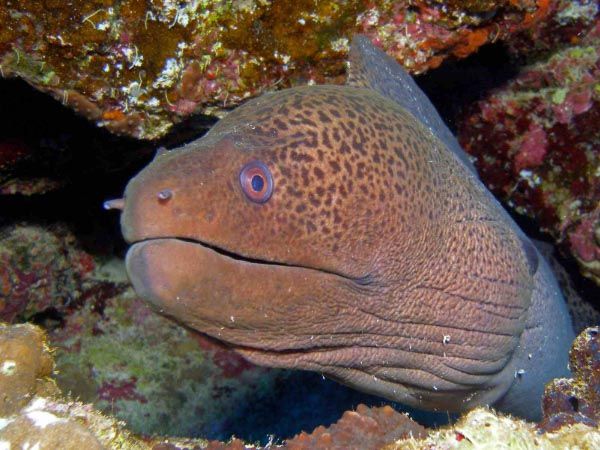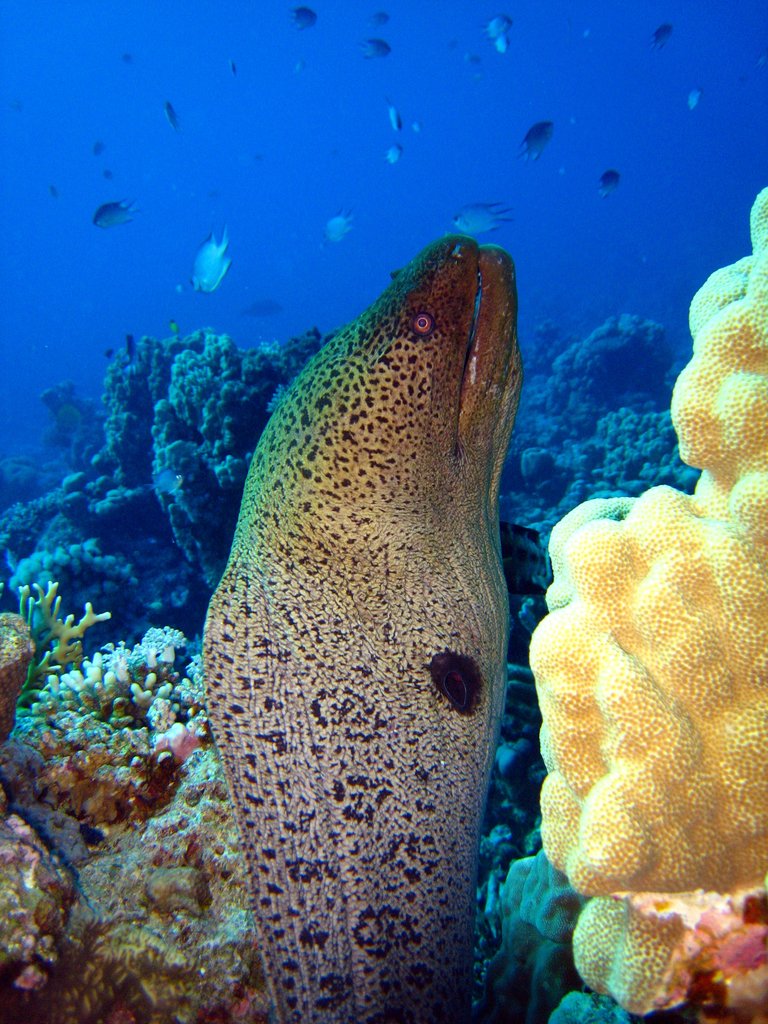
Red Sea Eels - Inspiration for "Alien"
Moray Eels are one of the fascinating creatures of the sea. Rumor says that Riddley Scott, Director of the movie "Alien" was inspired by videos of red sea divers Hurghada about Moray Eels in creating the main character of his movie. Whether it is true or not, and whether you are a marine biologist or simply a student of diving courses in Hurghada, or an enthusiast about marine life, this creature is worth studying.
While 32 species of eel have been reported in the Red Sea most of the reference books concentrate on the 24 most common varieties. Worldwide there are more than 200 different types of marine eel and they proliferate in tropical and temperate zones. Eels are categorized as bony fishes and range in size from just a few centimeters long to around 3.5m. They are characterized by their large mouths containing a whole lot of teeth. In fact most have 2 rows of teeth in their mouth (the oral teeth) and a second set of teeth in their throat (the pharyngeal jaws). The oral teeth are angled backward so that once bitten prey is unable to work its way free. The pharyngeal jaws then slide forwards to take the prey from the oral teeth and drag it to the eel’s throat.
Eels do not possess either pectoral or pelvic fins. While most varieties do display definite dorsal and anal fins a few types have undeveloped fins and appear very snakelike. Eels are known for their ability to swim backward. While they are not alone in this (the triggerfish can also swim backward as can many other species if they need to) they seem to practice this trick far more than any other marine creature.
Eels have restricted gill openings and are often spotted with their mouths open. This is because with restricted gill openings they need to “breathe” through their mouths, they draw water into their mouth to pump it over their gills.

Although they have large eyes, eels generally do not see well. However they have a very keen sense of smell and feel even small vibrations in the water. They are an ambush predator meaning they lie in wait for a meal to pass by and then pounce. Their sense of smell and sensitivity to vibration makes them very good at this. They feed mainly on fish, crustaceans, and mollusks (squid, cuttlefish, octopus). Depending on the size of their prey they can either simply bite their target or they are able to tie themselves in a knot around large prey to crush it until it is small enough to pass into the mouth. They are considered to be a top predator having a key role in regulating fish populations and behaviors on reefs. Eels have been known to co-operate with each other and also with other species, such as grouper, to hunt for food.
With the exception of the striped eel catfish and the Red Sea garden eel the eels live solitary lives but come together to mate. Their sexual orientation depends on their particular variety. Some are permanently either male or female, others are hermaphrodite starting their lives perhaps as male and then becoming female later or vice versa, while yet others are both male and female at the same time. Eels are known as pelagic spawners. They come together and form balls by wrapping their bodies around each other. During this process the female will release around 10,000 eggs for the male to fertilize. The larvae will then float away with the currents to form part of the plankton. Most of the larvae will be eaten during their journey but the survivors will eventually swim to the sea bed about a year after the original mating frenzy. There they will develop into adults. For most of the eels in the Red Sea the mating season is around June time.
Eels of Hurghada Red Sea are mostly docile and even shy of humans but be aware that they are prepared to bite if provoked so it’s better not to risk sticking your hand or arm into its hole or trying to stroke it.
If you are bitten by a moray, for example, your first problem will be to get the eel to release you. They tend not to do this so you could either end up losing a finger or two or you can try to surface with the eel still attached when it MAY let go otherwise you will need help to kill it to free yourself. In any event, an eel bite is a serious matter and you will definitely need medical attention and may end up with a permanent injury. Stroking the eels is not a good idea either. You will find your hands covered in a slimy mucus serving as a protective coating for the eel but which contains a large number of toxins.
So remember what we always advise: When you are with a group of
red sea divers and you are scuba diving in Hurghada, enjoy the dive with your
eyes only and keep your hands close to your body to get a safe diving holiday
in Egypt.
Margaret Hargreaves - PADI Instructor